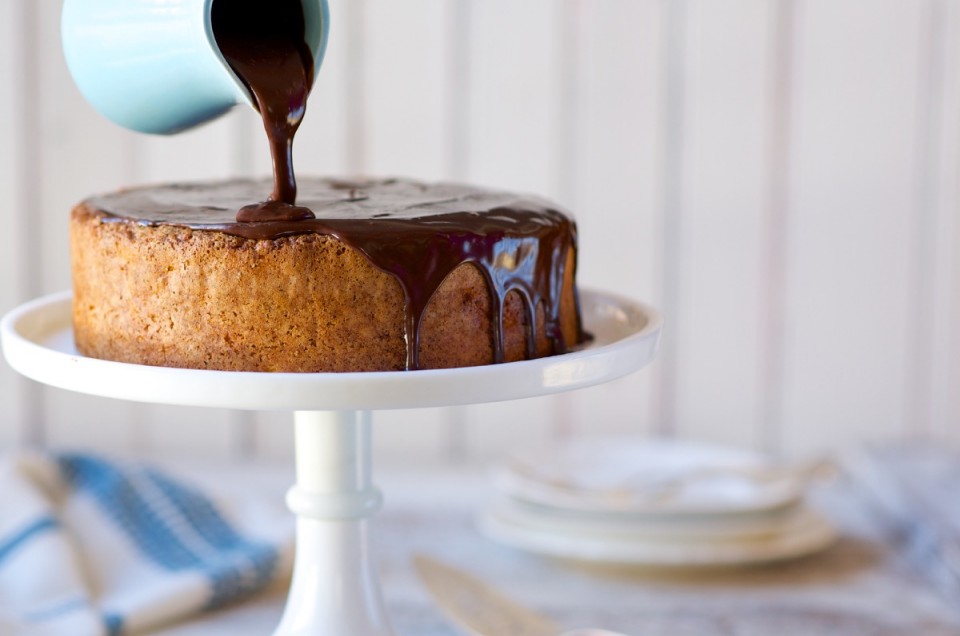


Chocolate ganache. For dipping, drizzling, coating, icing, saucing, or frosting, this simple combination of chocolate and cream just can't be beaten. But after years of chatting with friends and customers, I’m still surprised at the number of people who don’t know how to make ganache.
Now admittedly, it sounds kind of fancy. You know, like you’d need a cooking school degree to pull it off. After all, "ganache" is a French word, which to many of us, culinarily speaking, spells F-U-S-S-Y.
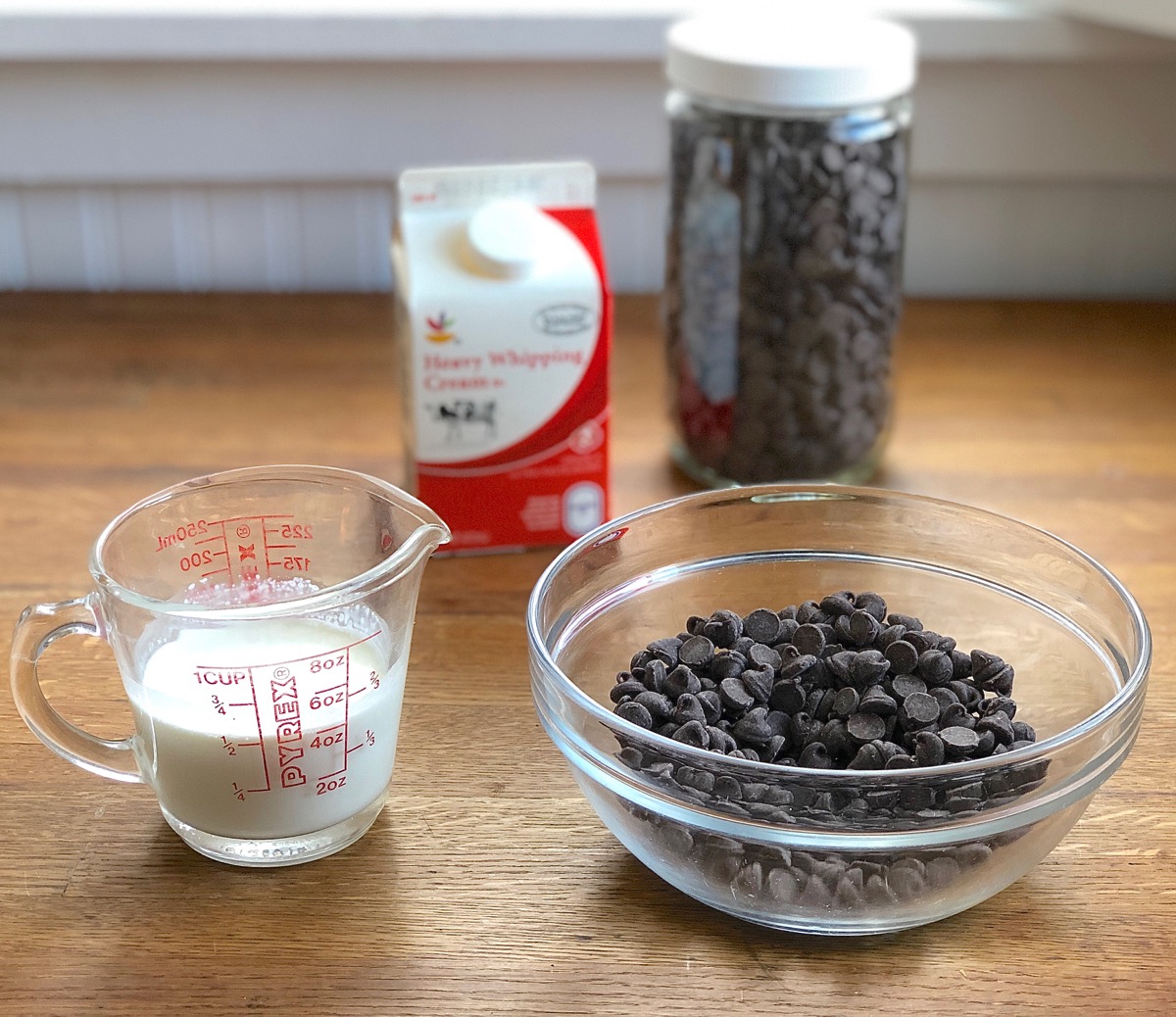
But ganache is anything but fussy. It includes two ingredients: chocolate and heavy cream. Heat the cream, pour it over the chocolate, stir until smooth, and voilà: you've made ganache. Can you warm up a cup of coffee in the microwave? Then you can make ganache.
And oh, the places it will take you! Make bittersweet, semisweet, milk, or white chocolate ganache to frost cakes, drizzle on ice cream, dip cookies, glaze pastries … it’s the perfect all-purpose delicious finishing touch.
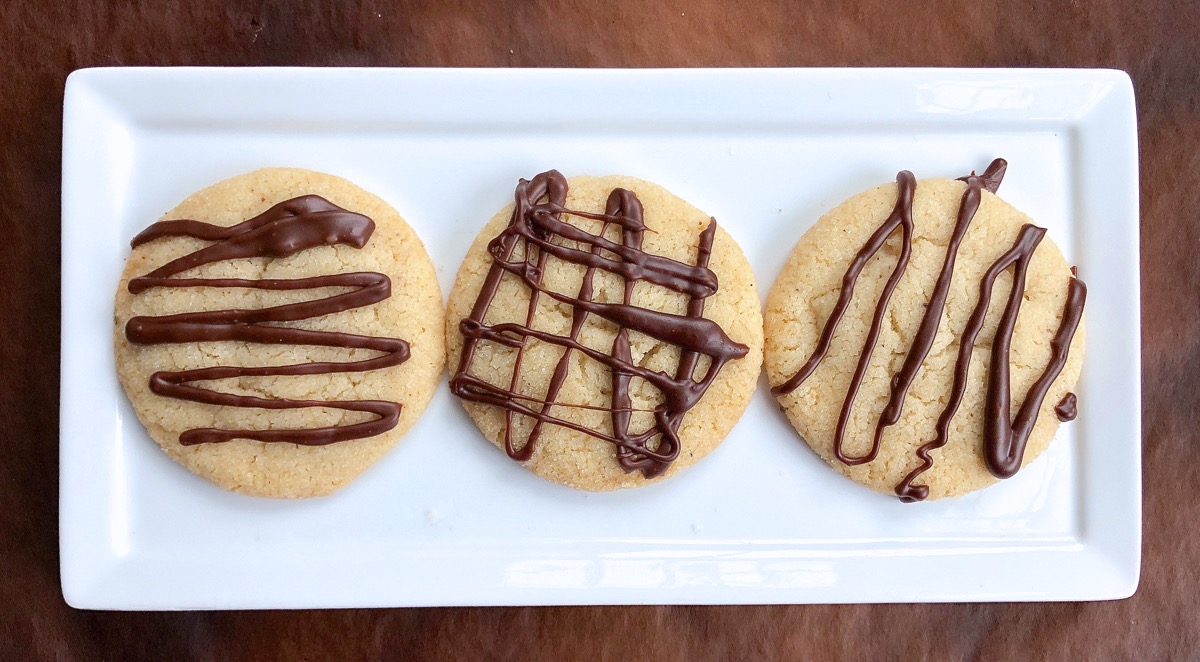
One of the wonderful things about ganache is your ability to vary its texture — first by adjusting the ratio of cream to chocolate, then by using the ganache while warm, or waiting for it to cool. You can make ganache whisper-thin for artfully drizzling atop Vanilla Sugar Cookies. Or make it pourably thick for icing your Favorite Fudge Birthday Cake.
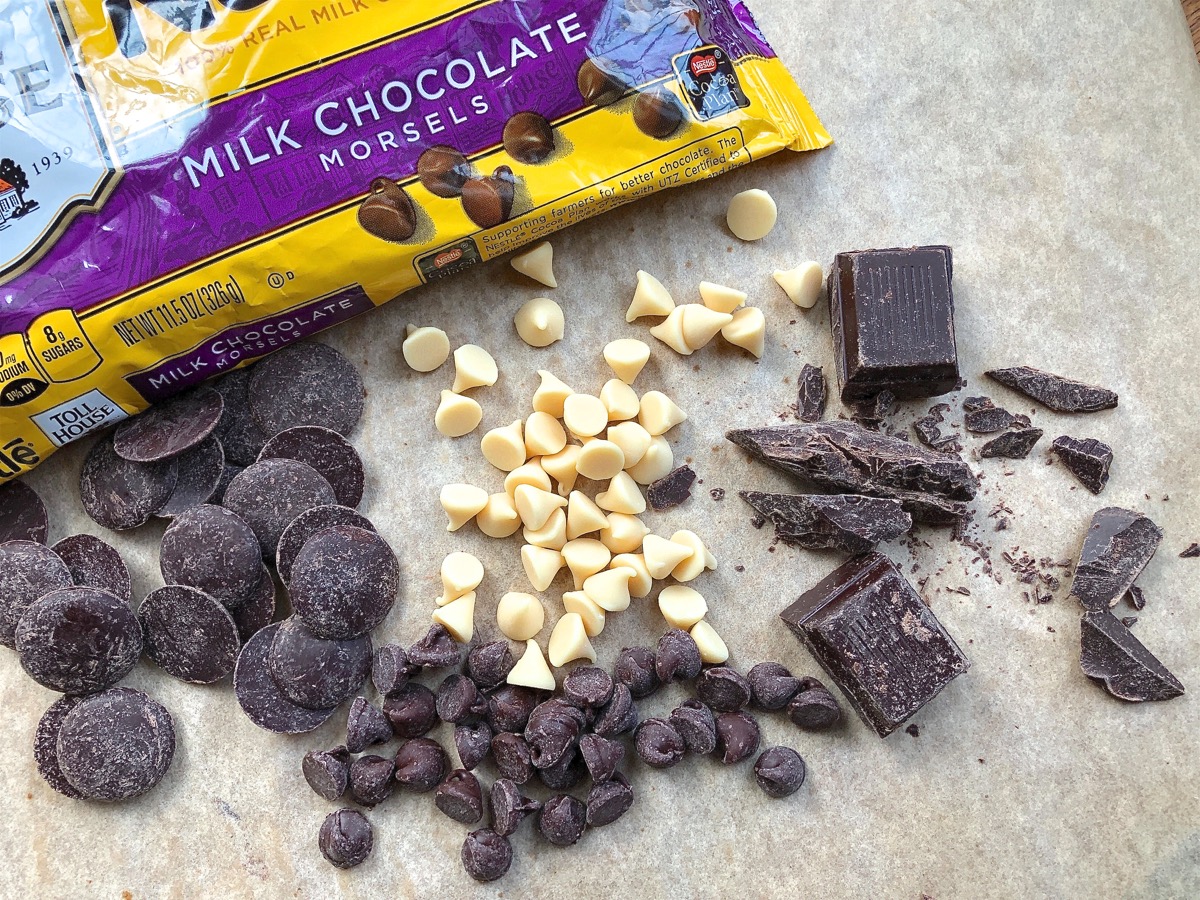
On the flip side, one of the potentially frustrating things about ganache is the infinite variety of chocolates you can choose from. Make two ganaches, one from imported bittersweet chocolate and one from store-bought milk chocolate chips; the outcome will be quite different, the bittersweet chocolate making a much stiffer ganache.
Why? Milk chocolate has more sugar. Sugar liquefies when heated and will stay liquid, creating a thinner ganache than you’d get with a lower-sugar chocolate. Thus this rule of thumb: the sweeter the chocolate (i.e., the more sugar it contains), the less cream you’ll need to make a typical pourable ganache.
Let me throw another variable into the equation here: Even the thinnest ganache will thicken as it cools. So if you misjudge on the side of too much liquid, don’t despair; given time, your ganache will probably be just fine.
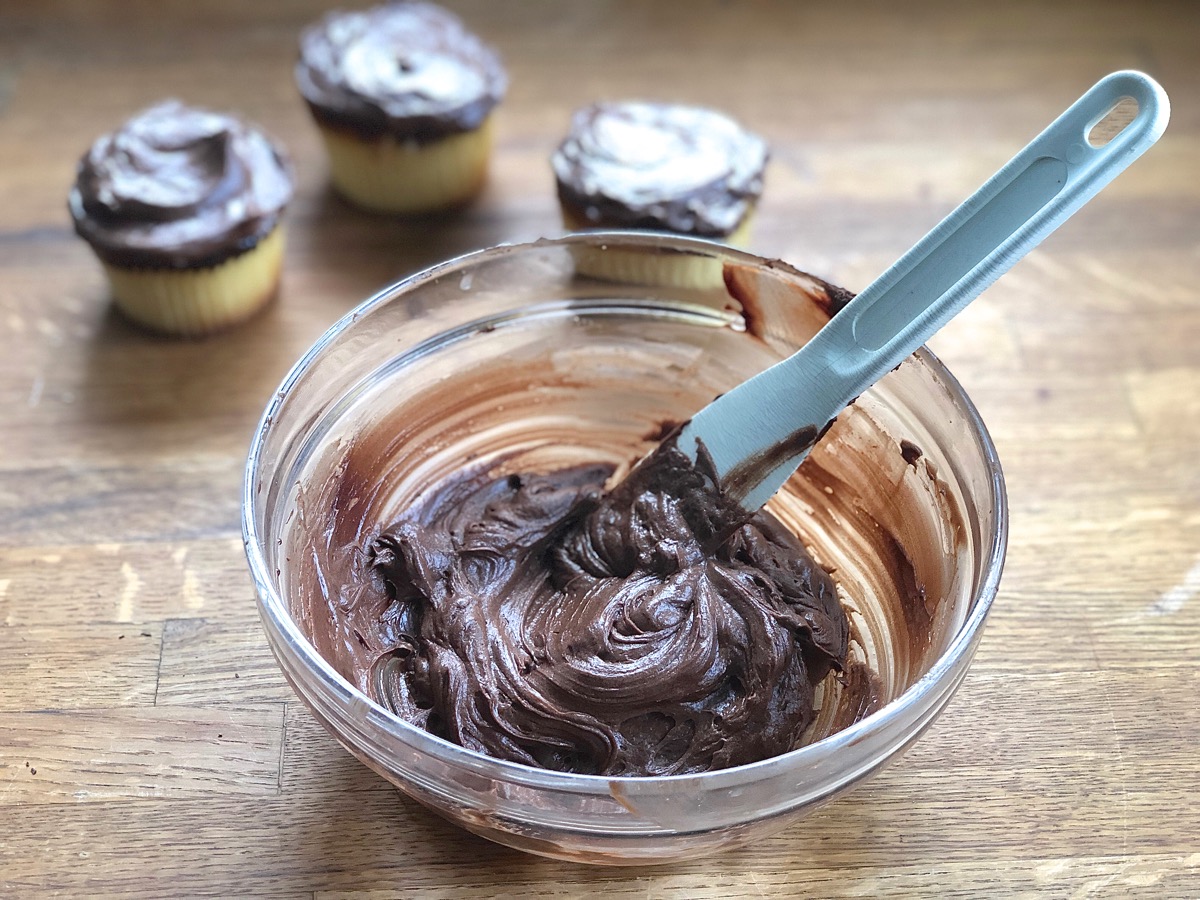
On the other hand, if in the process of cooling your ganache you discover it’s become too thick, simply beat it with an electric mixer; it will loosen up enough to become a lovely, spreadable frosting.
My goal here is to nail a middle-of-the-road, all-purpose ganache, one that’s pourable when warm, spreadable when room temperature, and stiff when cold (suitable for filling sandwich cookies or making truffle centers).
In doing these tests I use Nestlé semisweet, milk chocolate, and butterscotch chips; plus Hershey's white baking chips. These are the brands most available to the majority of us. Of course, feel free to use the chocolate of your choice: bars, discs, chips, or chunks. As noted above, results may vary.
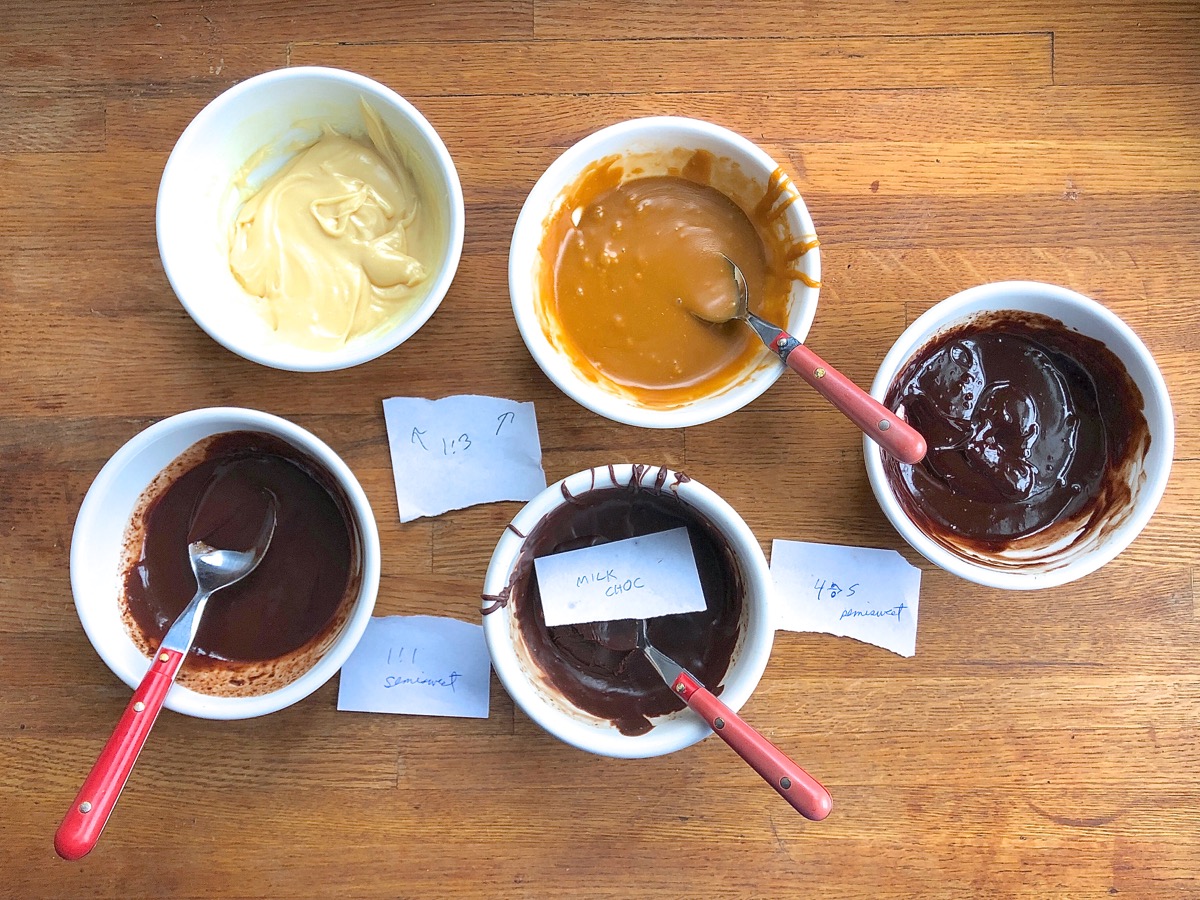
Without taking you through every variation on the chocolate/cream ratio, here’s my conclusion:
Note: Purists will insist that ganache made with anything other than chocolate (no butterscotch, no "white" chocolate) isn't ganache. You're right; I'm simply calling it ganache for simplicity's sake.
Understand that these ratios are based on weight, not volume (another great reason for baking with a scale). It’s super easy to do some simple math and measure out your cream and chocolate in grams.
Still, if you're making ganache using measuring cups rather than a scale, here’s some handy information:
1 cup chopped chocolate or chocolate chips weighs 170g (6 ounces); 1 cup heavy cream weighs 227g (8 ounces). So a 2:3 ratio (cream to chocolate) would be 1/2 cup cream, 1 cup chips; and a 1:3 ratio would be 1/4 cup cream, 1 cup chips.
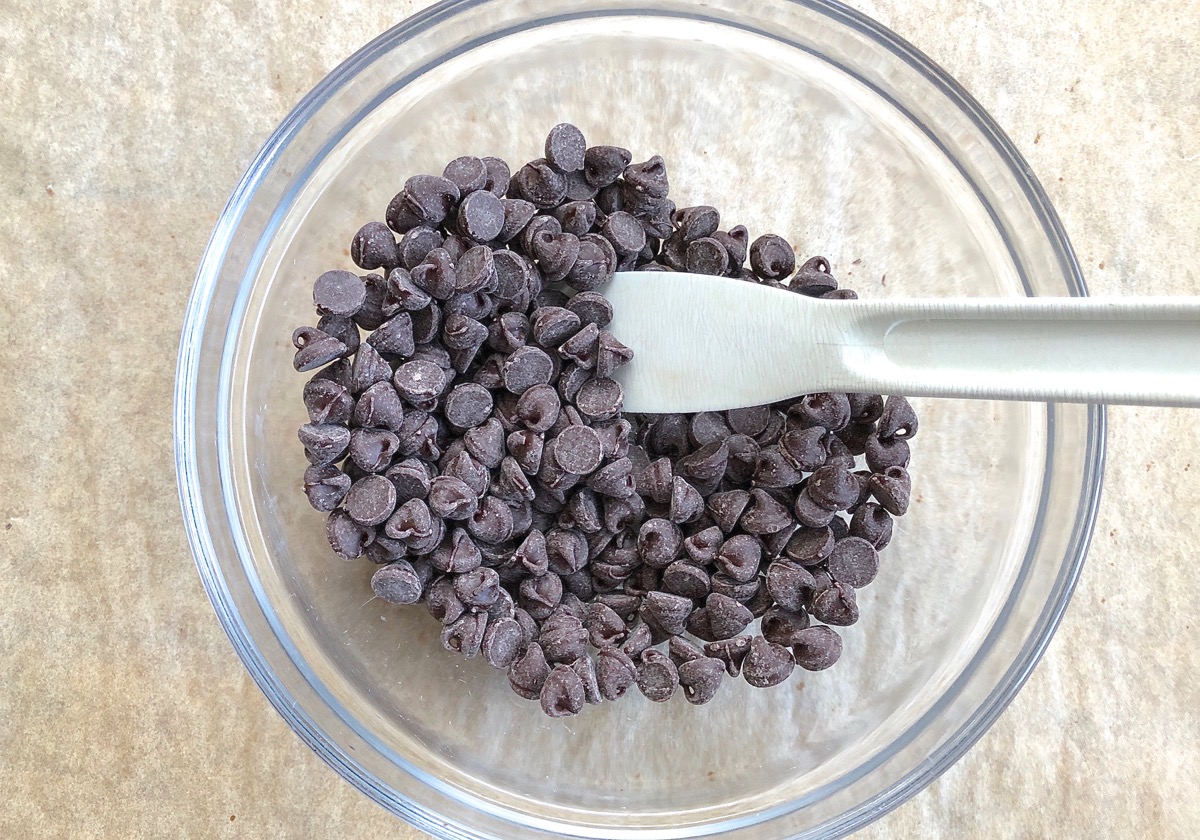
This first batch of ganache follows the 2:3 ratio: two parts cream, three parts chocolate (by weight). I'm using 114g (4 ounces, 1/2 cup ) heavy cream (or heavy whipping cream) and 170g (6 ounces, 1 cup) chocolate chips.
Heavy cream, whipping cream, heavy whipping cream — what's the difference? Heavy cream (a.k.a. heavy whipping cream) is slightly higher in fat than whipping cream. The higher-fat cream you use, the richer your ganache. I'm doing my testing with heavy whipping cream.
First, place the chocolate chips or chopped chocolate in a heatproof bowl. If the bowl and/or your kitchen is cool, pre-warm both bowl and chocolate in your microwave very briefly; for 1 cup of chocolate, 30 seconds should do it.
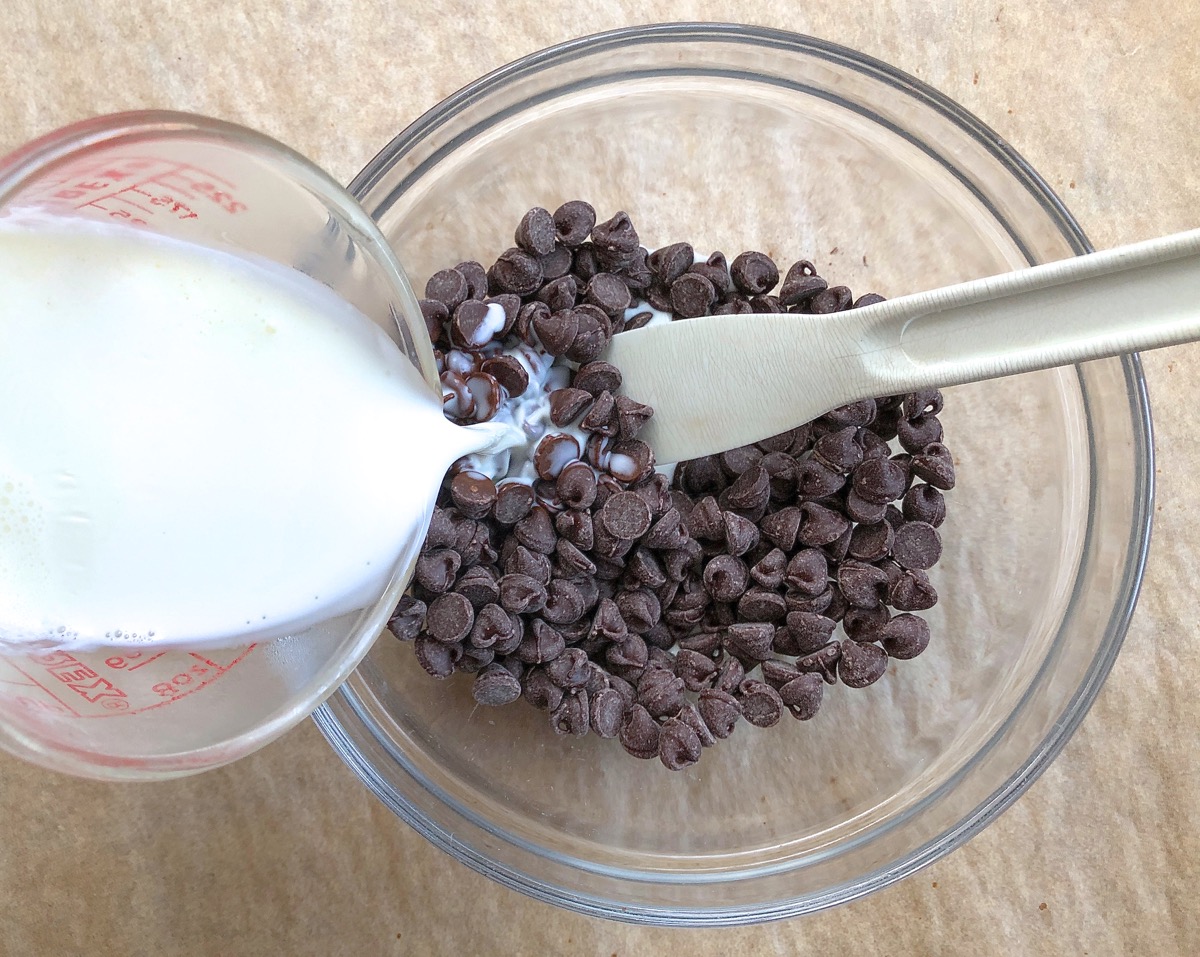
Next, heat the cream until it's very hot; it should be steaming, just short of a boil. This point of heating — where very fine bubbles form around the edge — is called "scalding," in case that's a term familiar to you.
Pour the hot cream over the chocolate, and let the mixture rest for 5 minutes. This gives the cream a chance to soften the chocolate.
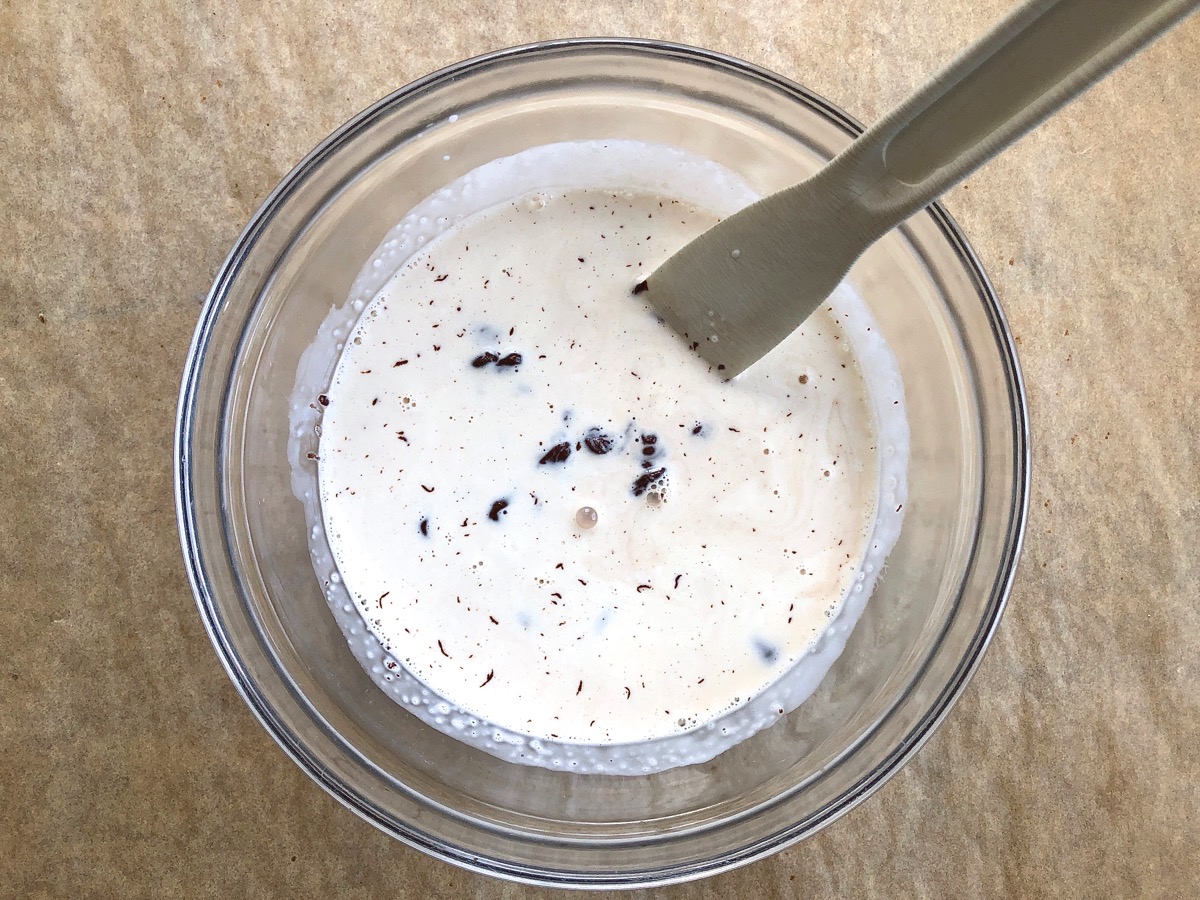
Stir together the cream and chocolate; it'll look like a gloppy mess, and you'll despair of it ever becoming smooth. Don't worry; it's supposed to look like this.
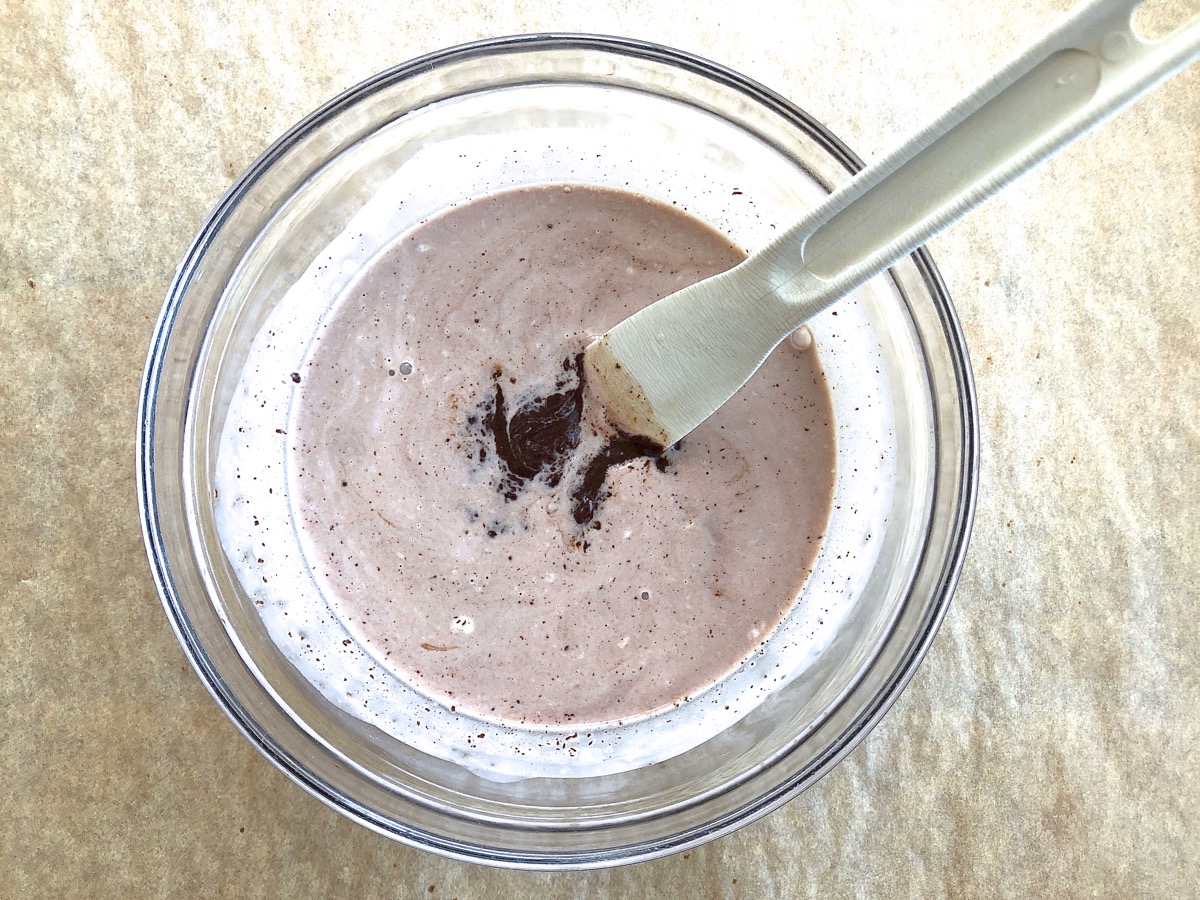
Soon, you'll see the chocolate start to melt into a cohesive mass.
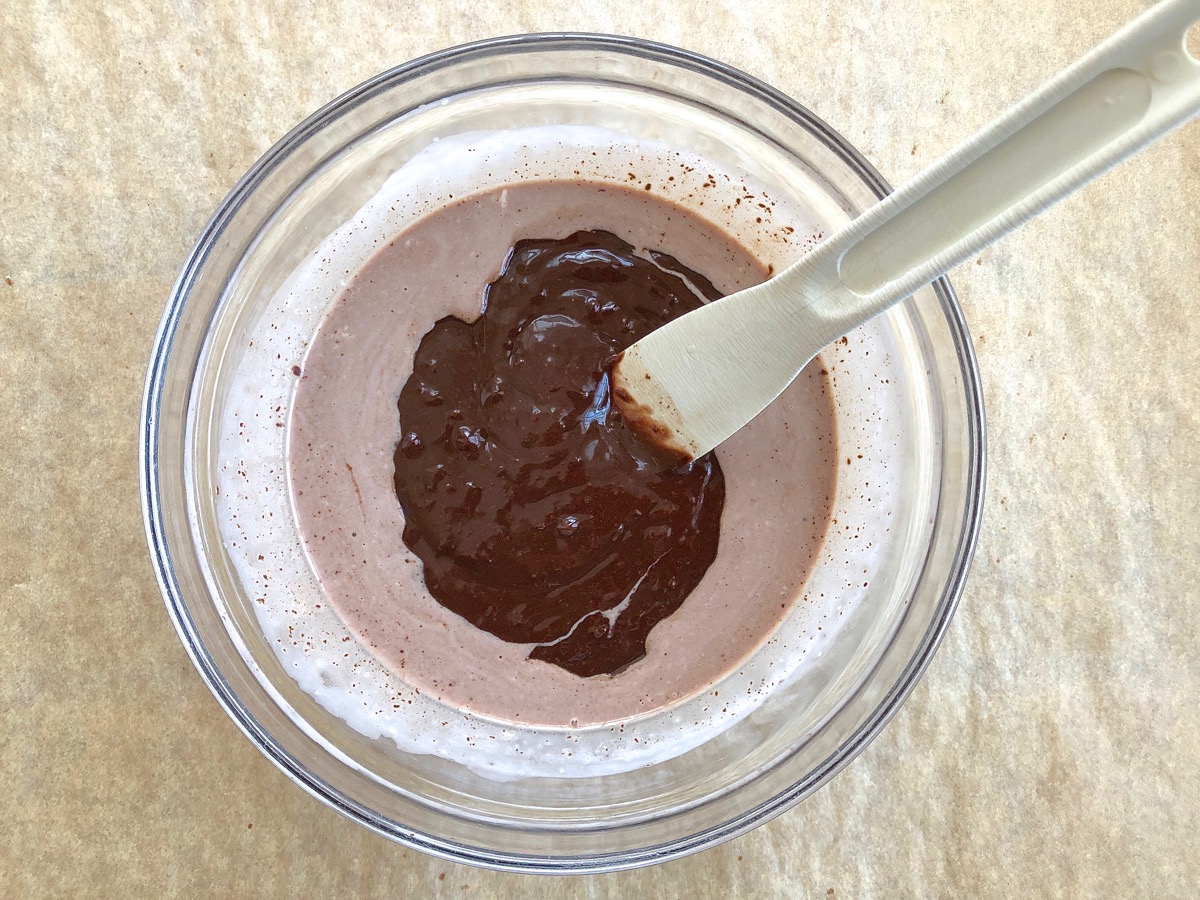
The chocolate will start to follow the spatula or spoon around the bowl, with some of the cream being pushed off to the edges.
Stir, stir, stir ...
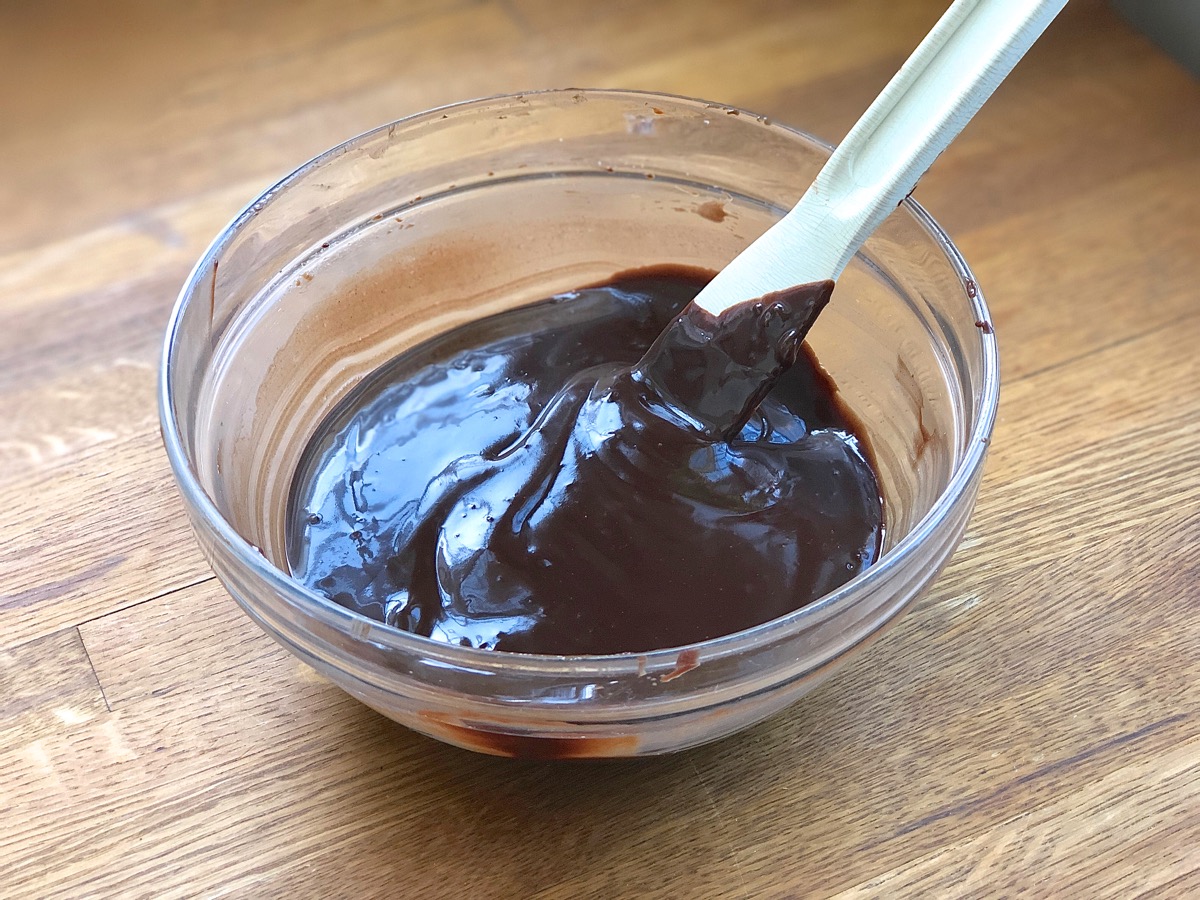
... and finally, the melted chocolate and cream will turn into smooth, rich ganache. Really. Trust me.
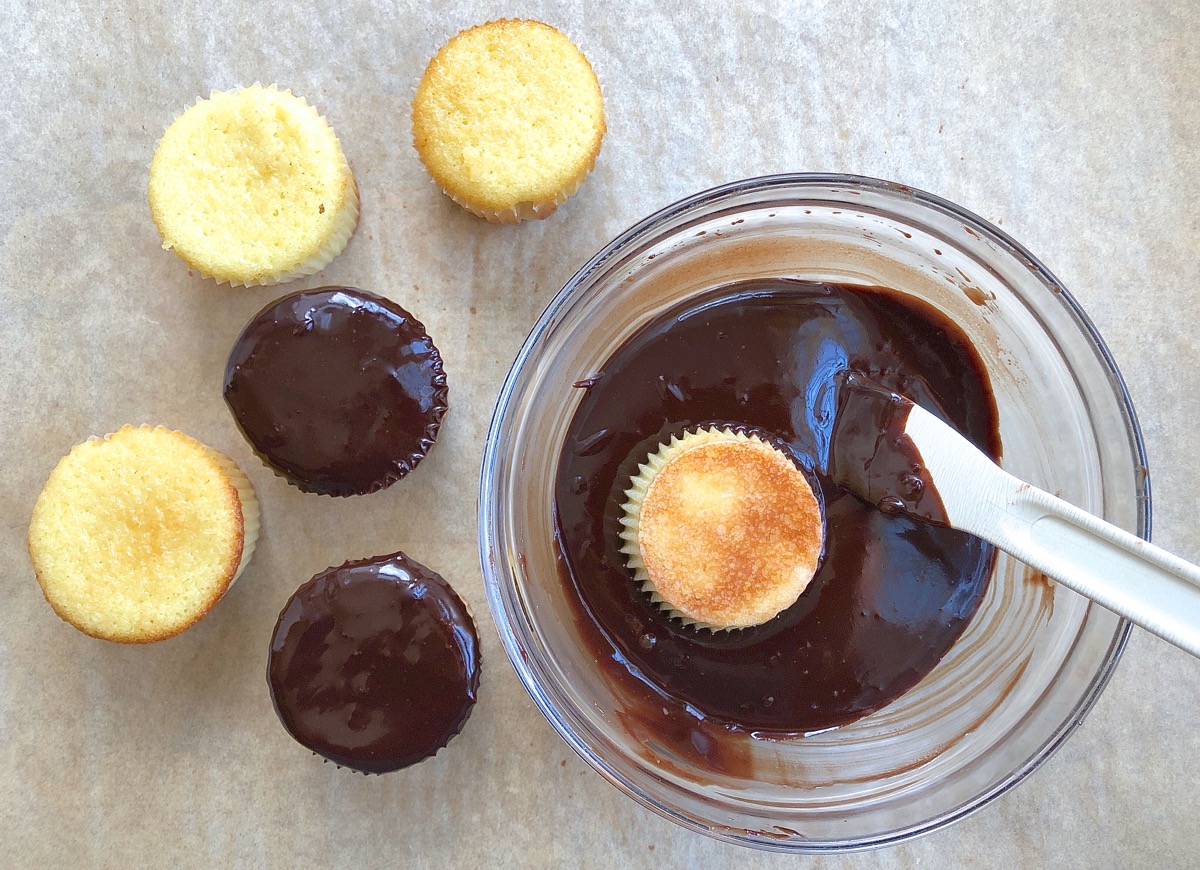
Use this pourable ganache right away to dip the tops of cupcakes (or bottoms of cookies). While it's not quite liquid enough to drizzle nicely off a spoon or fork, you can spoon it into a liquid measuring cup with a spout to stripe your cookies artfully.
For a ganache with more body, perfect for spreading between layers and atop a cake, let it rest and set up until it's thickened to your liking. If you're in a hurry, pour the ganache into a shallow pan and chill it in the refrigerator.
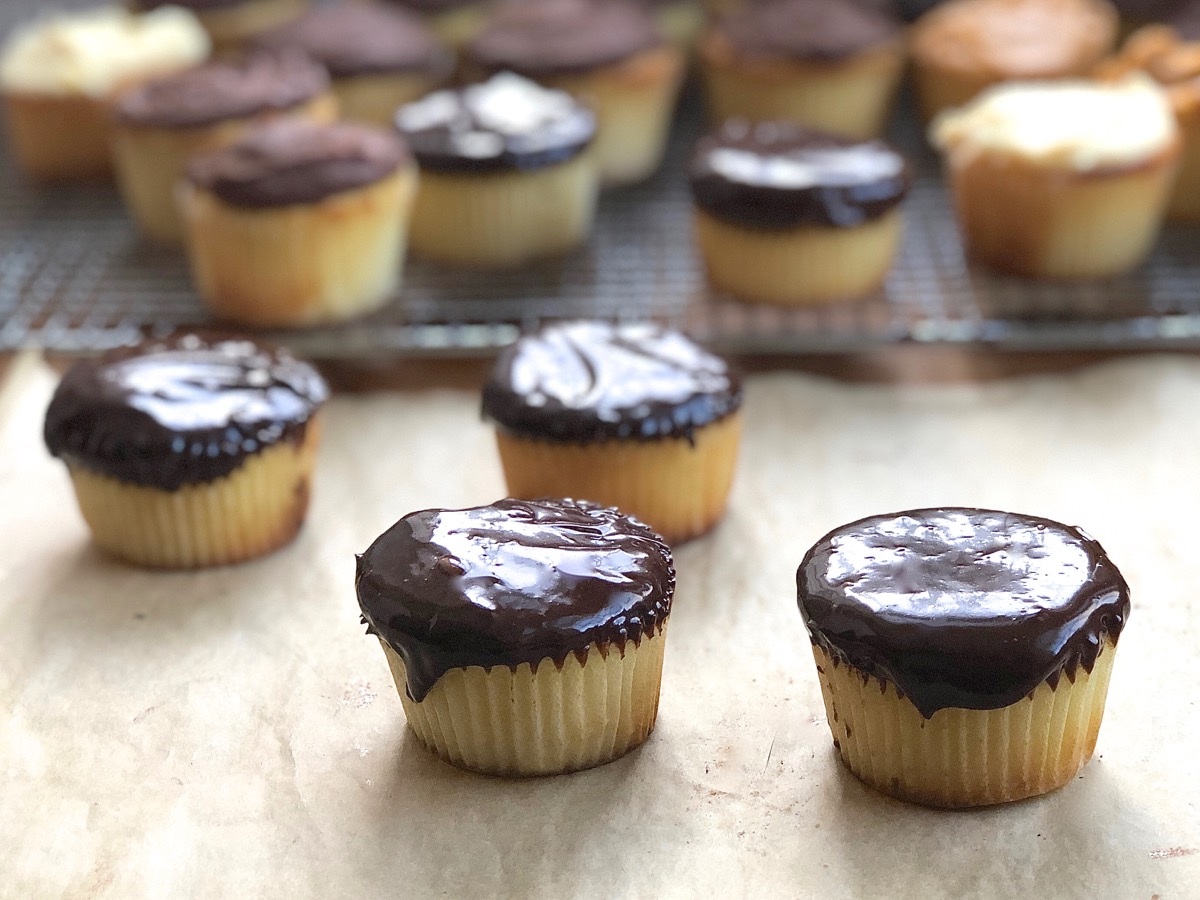
Whether at room temperature or in the fridge, the ganache will gradually solidify. Don't worry if it's still quite soft at room temperature hours after you've made it; eventually it stiffens up.
When completely cool, the ganache will be the consistency of stiff peanut butter; at this point you can either use it to fill sandwich cookies, or beat it into a soft frosting.
Ganache made from other flavors of chips isn't truly ganache, since it's not made from chocolate. But you can still use these chips — white, cinnamon, butterscotch — to make icing or filling that's both pourable and spreadable. Since these alternate chips are highly sweetened, you'll want to use the 1:3 ratio (cream to chocolate) mentioned earlier.
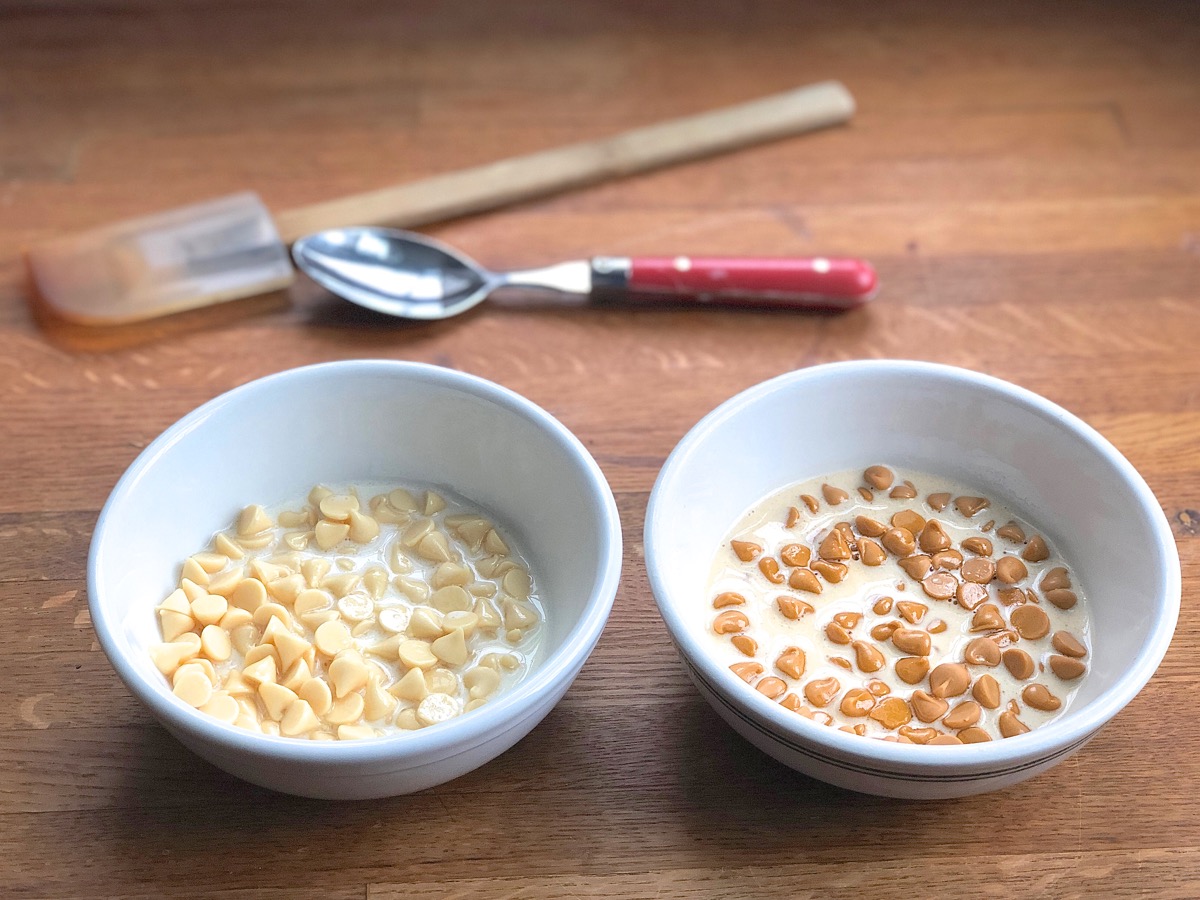
I'm using 28g (1 ounce, 2 tablespoons) heavy cream (or heavy whipping cream) and 85g (3 ounces, 1/2 cup) chips.
I follow the same process: preheat the bowl, heat the cream, combine with the chips.
But here's where things get a bit sticky. These "baking chips" simply won't melt as smoothly as chocolate; I need to coax them along.
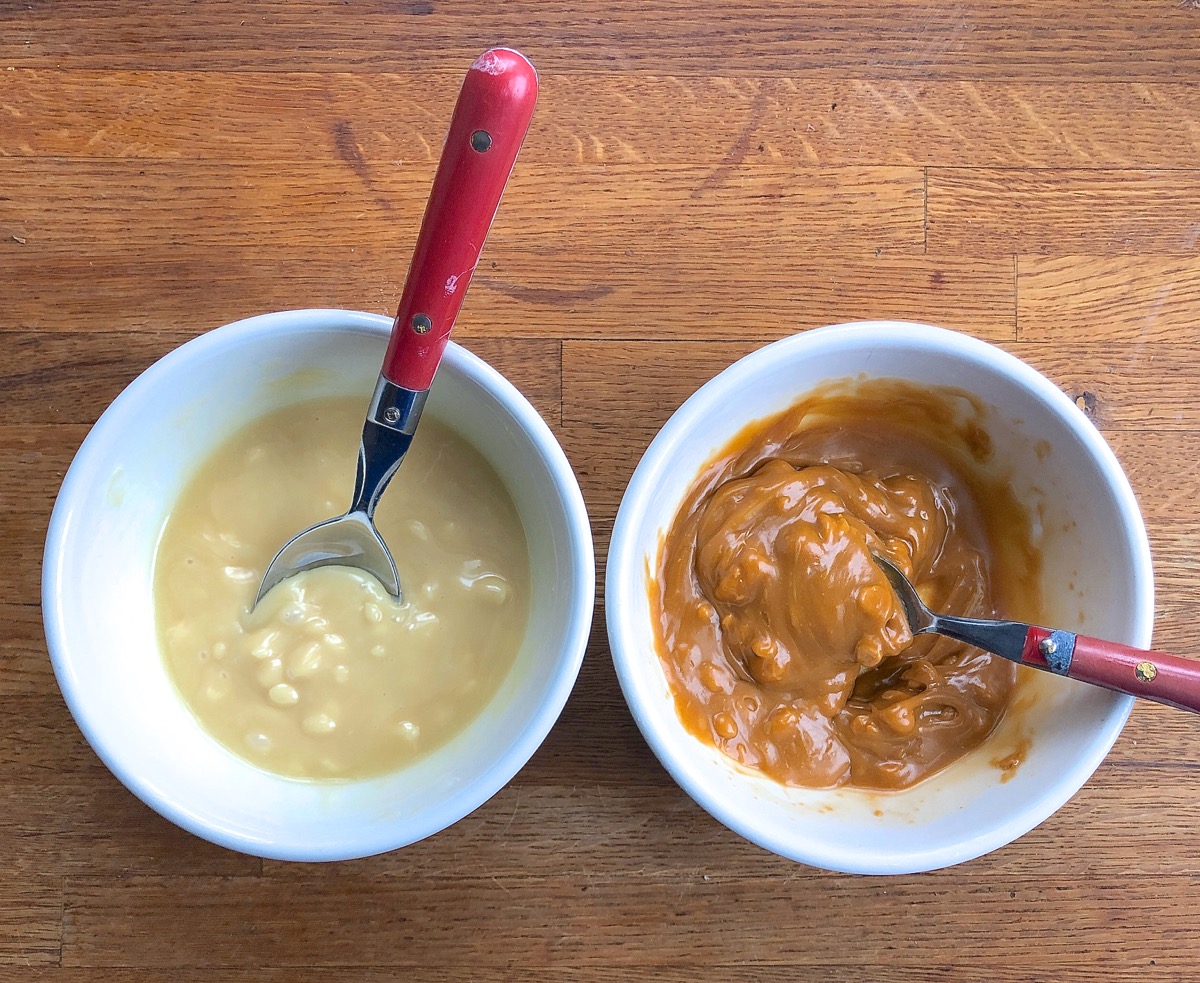
After pouring hot cream onto the chips, letting the mixture rest for 5 minutes, then stirring, this is what I see: some smooth-ish ganache liberally studded with unmelted chips.
So here's the coaxing part: I reheat the mixture very briefly in the microwave; I want it barely warm, not piping hot. Then I stir it again, warm it again, stir, until finally most (if not every single one) of the chips has melted.
When you do this at home using your own ingredients and microwave, play it by ear (by touch, actually), starting with 15-second bursts of heat. Stir the warmed mixture until it cools down enough that the chips are no longer melting.
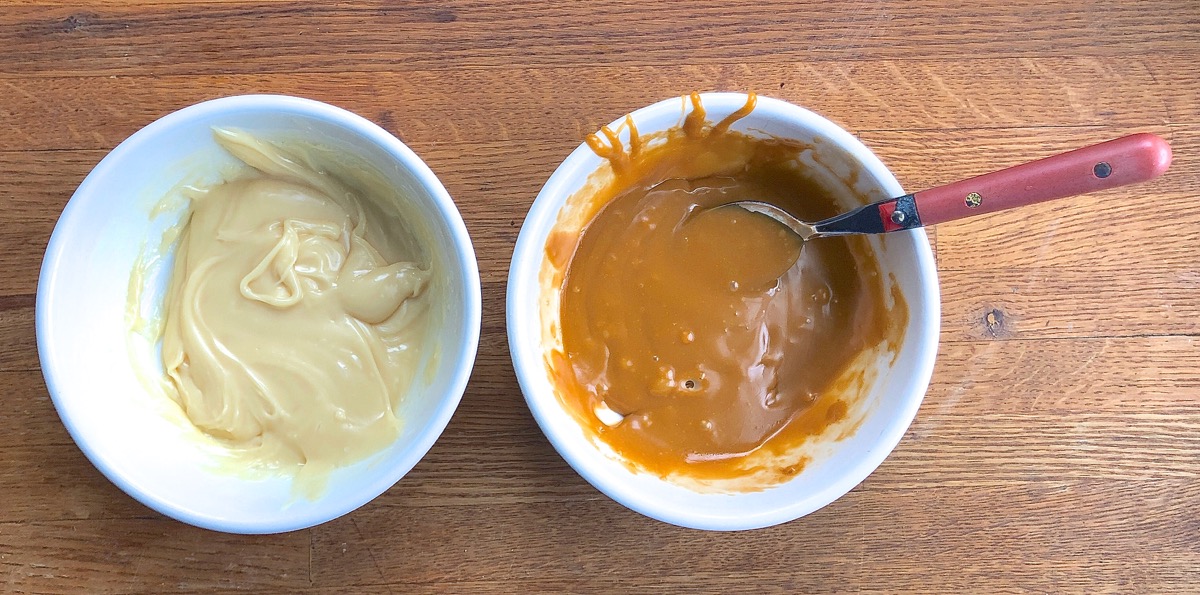
Repeat until the ganache is very smooth. If there are still a few unmelted chips (as in the case of the butterscotch ganache above), it's totally permissible to smooth things out with a stick blender — I'll never tell!
To glaze and fill a typical two-layer 9" cake with plain (not whipped) ganache, use 340g (2 cups) chocolate and 227g (1 cup) heavy cream. A general rule of thumb is that volume-wise, you'll end up with a little less ganache than the amount of chocolate you use — e.g., start with 2 cups of chocolate, you end up with a scant 2 cups of ganache (about 1 3/4 cups, to be exact).
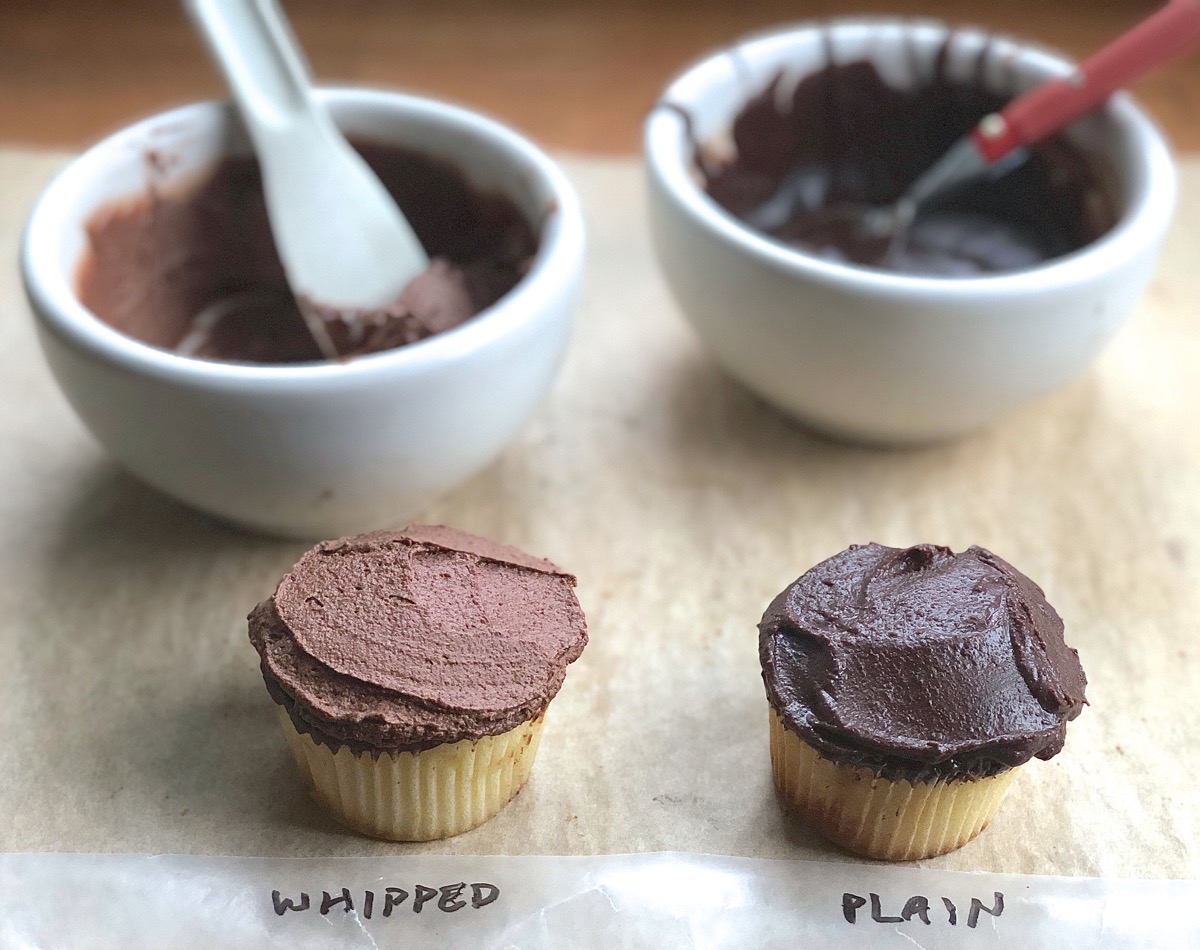
When you whip ganache into frosting it lightens in color; and it increases in volume by about 40%. That 1 3/4 cups ganache made from 340g (2 cups) chips becomes a scant 2 1/2 cups frosting. This is enough to apply a fairly thin layer of frosting to a 9" x 13" cake, or about 15 to 18 cupcakes.
To frost an 8" or 9" layer cake, double the amount of ganache; it'll whip into about 5 cups of frosting, enough to both generously frost your cake, and pipe on some decorations.
Why do you need nearly double the amount of whipped ganache frosting (as opposed to plain ganache) to frost a layer cake? Plain ganache creates a thin layer of icing on your cake. When you frost a cake, you apply it in a much thicker layer, often adding piped decorations.
Anyway, you can always use any leftover ganache frosting to make sandwich cookies!
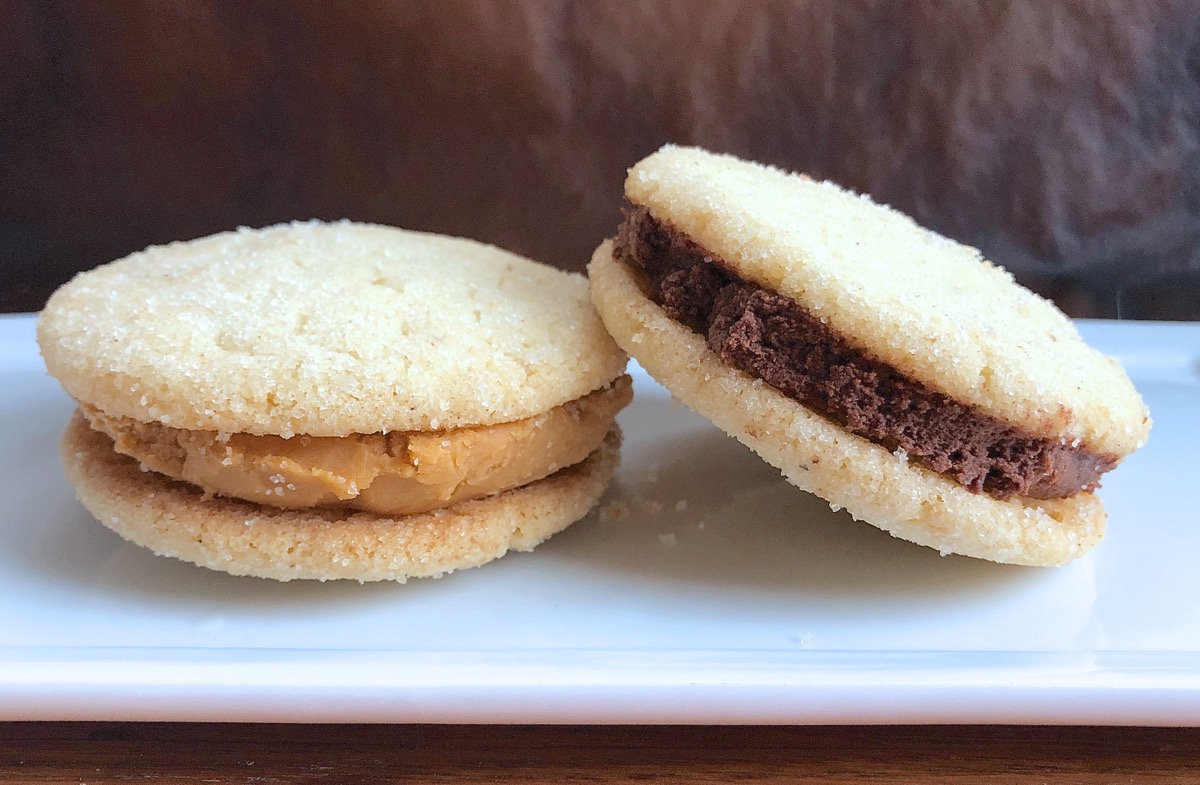
Vanilla Sugar Cookies sandwiched with cooled butterscotch ganache (l) and beaten semisweet chocolate ganache (r).
Want to learn more about working with melted chocolate? Read our blog posts:
Dipping chocolate tips: a simple path to smooth and shiny
A basic guide to tempering chocolate
How to melt chocolate: low and slow is the way to go